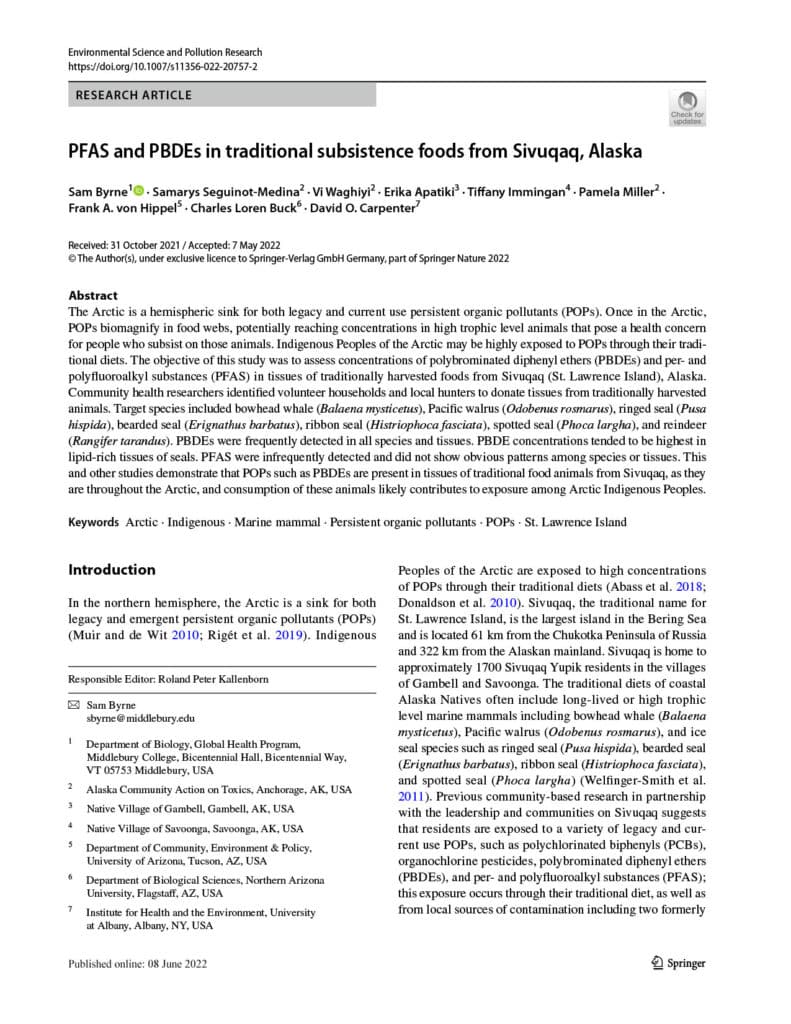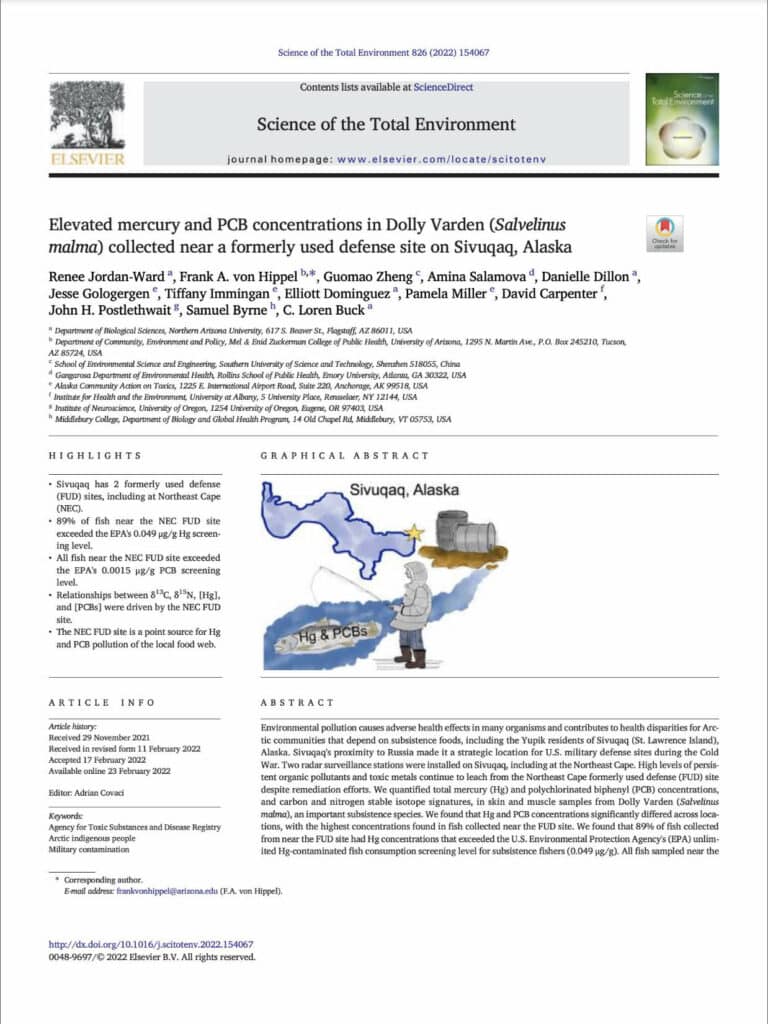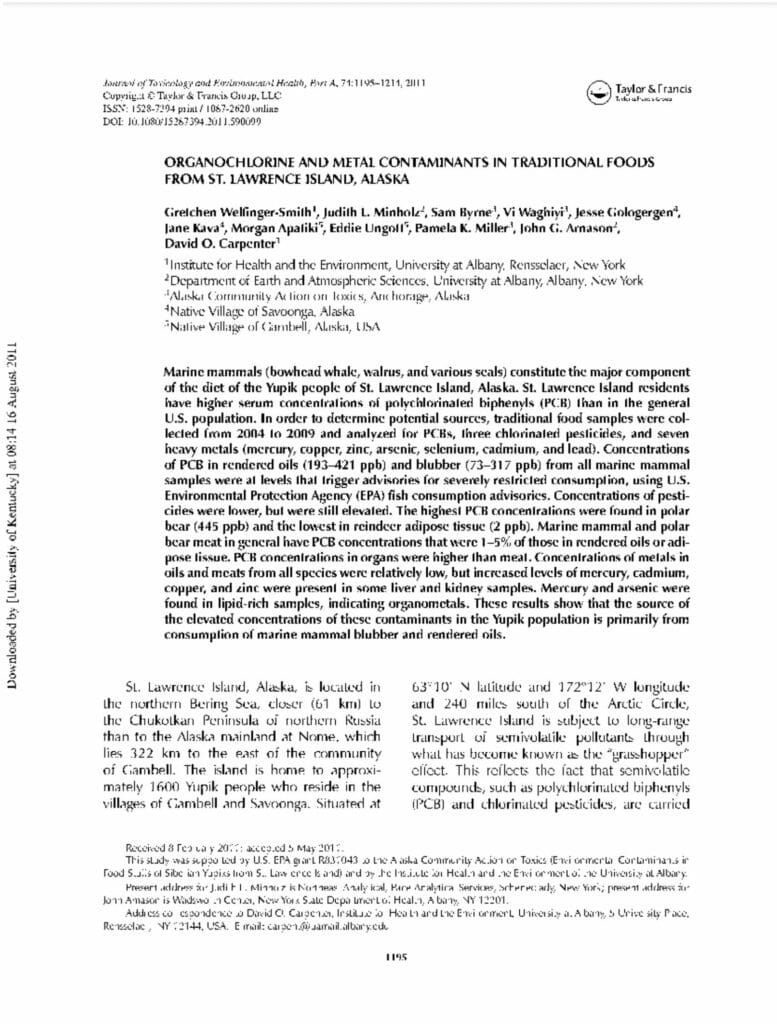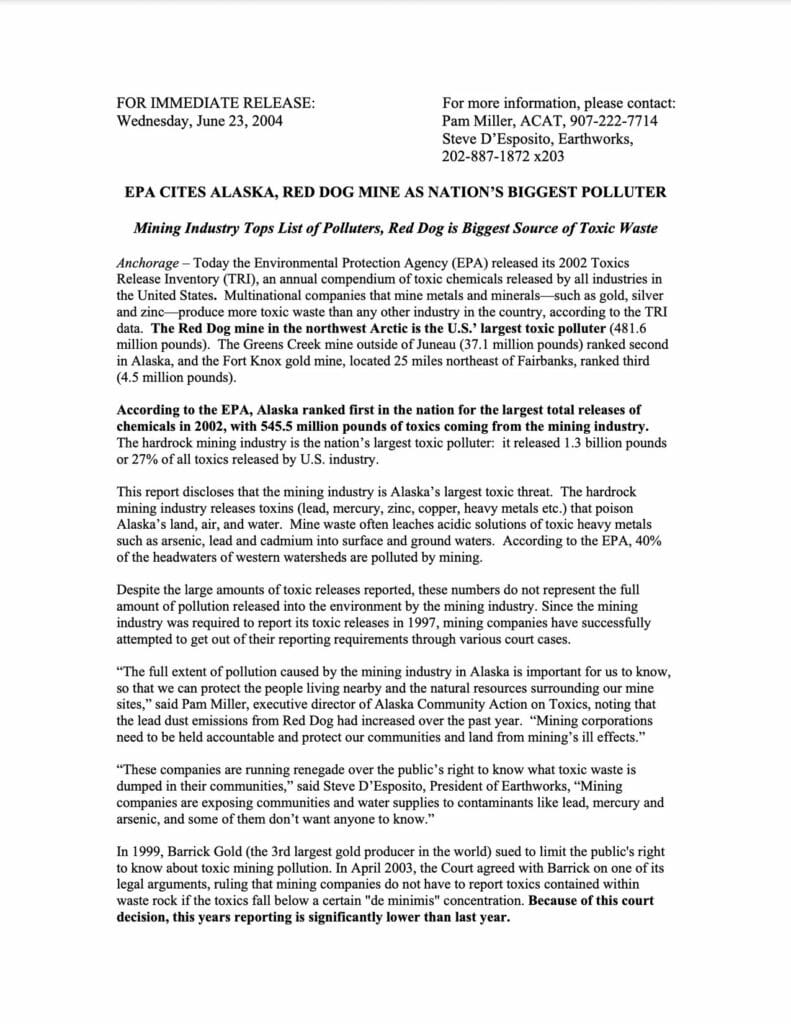Food Security
PFAS and PBDEs in traditional subsistence foods from Sivuqaq, Alaska
The Arctic is a hemispheric sink for both legacy and current use persistent organic pollutants (POPs). Once in the Arctic, POPs biomagnify in food webs, potentially reaching concentrations in high trophic level animals that pose a health concern for people who subsist on those animals. Indigenous Peoples of the Arctic may be highly exposed to…
Read MoreElevated mercury and PCB concentrations in Dolly Varden (Salvelinus malma) collected near a formerly used defense site on Sivuqaq, Alaska
Sivuqaq’s proximity to Russia made it a strategic location for U.S. military defense sites during the Cold War. Our results suggest that the Northeast Cape FUD site remains a significant point source of mercury and PCB pollution and contributes to higher concentrations in resident fish, including subsistence species. Moreover, elevated Hg and PCB levels in…
Read MoreOrganochlorine and Metal Contaminants in Traditional Foods from St. Lawrence Island, Alaska
St. Lawrence Island residents have higher serum concentrations of polychlorinated biphenyls (PCB) than in the general U.S. population. In order to determine potential sources, traditional food samples were collected from 2004 to 2009 and analyzed for PCBs, three chlorinated pesticides, and seven heavy metals (mercury, copper, zinc, arsenic, selenium, cadmium, and lead).
Read MoreRed Dog and Subsistence: Analysis of Reports on Elevated Levels of Heavy Metals in Plants Used for Subsistence Near Red Dog Mine, Alaska
The study team collected vegetation samples from a site at the port and from traditional subsistence harvest areas for the villages of Point Hope, Kivalina and Noatak, all three within an 80-mile radius of the mine. This study found that cadmium concentrations were highest in vegetation samples collected at the port and that lead concentrations…
Read More



